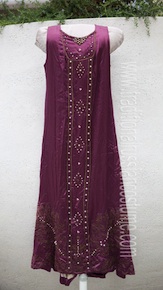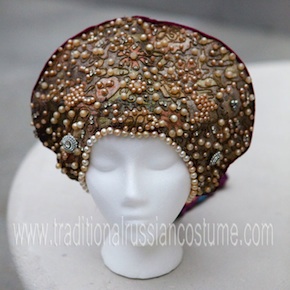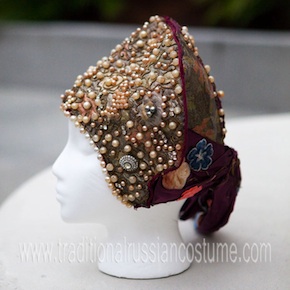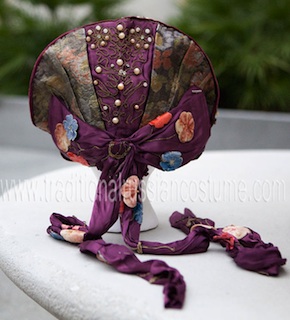
| Outfits >>> Genuine outfits >>> Costume for a costume party (probably) | |||||||

|
| ||||||
Soon after the end of slavery in Russia (1861), everything "native Russian" came to a favor among Russian nobility. Famous composers created operas and symphonies based on Russian history and folk epic poems. Peasant women - traditional singers became extremely popular in cities. High-end restaurants offered dishes of "Russian village cuisine". And, clothes based on peasants' outfit started to be used as an outfit for parties and special occasions. Even czar's family had expensive and fancy sarafans, kaftans, and shushuns. The outfit shown on photos was donated by descendants of people who fled from Russia because of Communist revolution of 1917. Unfortunately, former owners don't know exactly, when and for what purpose it have been done. This is not a real Russian clothes - it is just an imitation. However, choice of materials and decoration style allow to conclude the author knew Russian peasants' outfits and traditions. First, vertical decorative lines on the front of the sarafan were a must-be detail of real village sarafans of late 1800's. Second, beads used for the headdress imitate pearls. Peasant women of Northern Russia have embellished their kokoshniks with pearls. Third, the bowknot at the back of the headdress resembles silken bowknots village women wore for parties and celebrations. But, a beautiful golden needlework at the bottom of the sarafan is not traditional. It obviously was voluntary added by the author of the costume. Being non-traditional, nevertheless, this masterpiece is nice-looking and elegant. | |||||||
Sources (in Russian)
| |||||||


